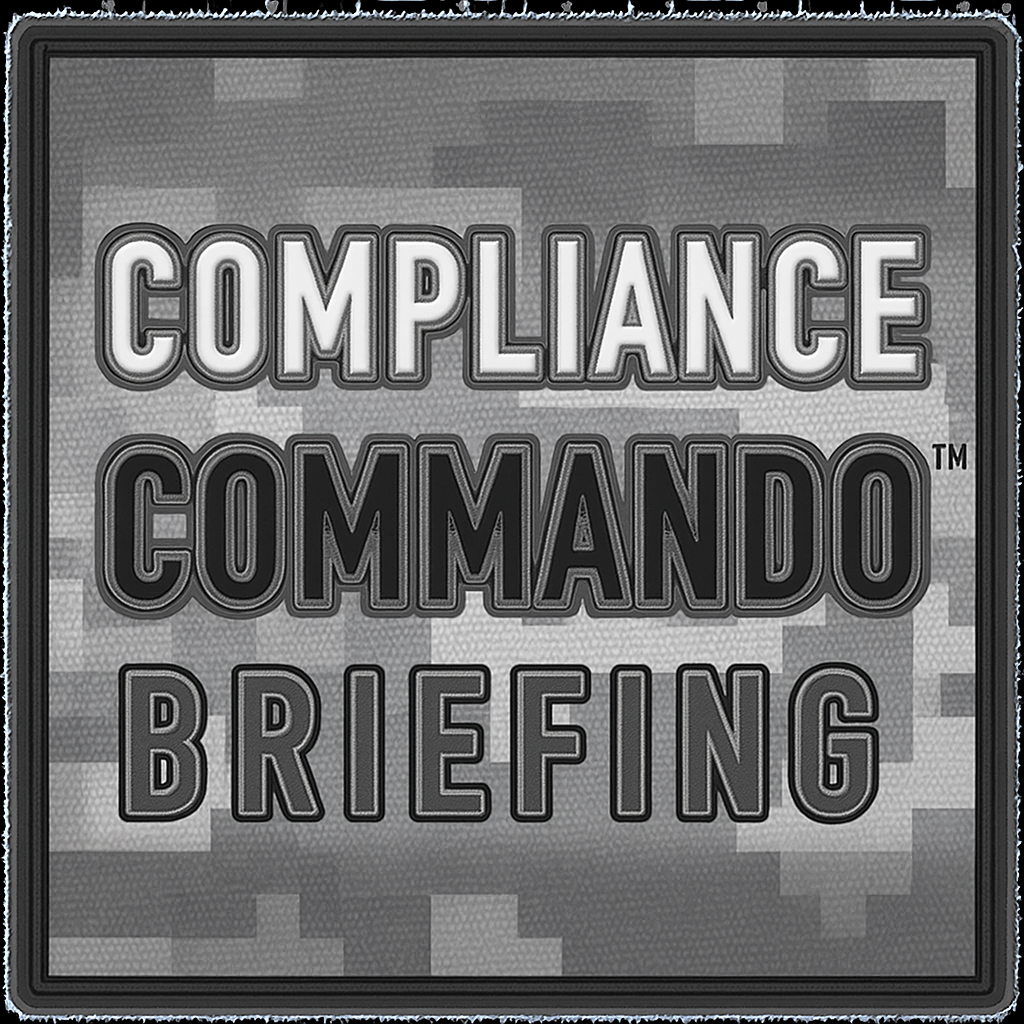Compliance Commando Briefing: Element 4: The Regulations, Standards, and Procedures

The Regulations: Standards and Procedures
Now that our authority, culture, and risk pieces are in place, the next step is to build the framework that contains it all. Here’s our guide to building effective standards and procedures.
In the military, success in the field depends on “following the regs” and “meeting standards.” These standards are written out and accessible to all. Those directives, procedures, and standards are the critical “how-to’s” and “what-ifs” that guide decision-making in real time. In the business world, those “regs" take the form of a code of conduct, employee handbook, quality standards, policies, and procedures.
But simply having documentation, such as a code of conduct, isn’t enough. Policies that sit on a shelf, disconnected from operations and their associated risks, may even harm your organization.
To build an effective compliance program, the following steps will help ensure your policies are specific, practical, and actually mitigate risks.
Step 1: Target Risk Areas
Start with your risk assessment. Consider this your intelligence briefing—in other words, the information that guides all forward movement. Review your policy library and ensure that each identified risk has clear, actionable policy language and processes in place.
Focus first on the highest-risk areas. Any gaps or outdated guidance should be flagged and corrected immediately.
Step 2: Align with Leadership and Core Values
Before drafting or updating your code of conduct, anchor it in your organization’s mission and values. We recommend convening with senior leadership, especially if your organization’s values are unclear or inconsistently applied.
A message from the CEO or other C-suite executives can help set the tone from the top of the company. The message should emphasize the importance of compliance with law and policies. More importantly, the message should encourage ethical decision-making based on the company’s core values and speaking up when things go sideways.
Step 3: Build the Manual
Your “field manual,” or code of conduct, needs to be more than aspirational. Design it with the end user in mind.
Use clear structure, headings, and language to make policies easy to find and understand.
- Focus on high-risk, high-impact areas first, with more specific guidance on how to comply.
- Include commonly encountered examples, scenarios, and FAQs to illustrate expectations.
- Make reporting hotlines or websites easy to find and explain what happens after an employee makes a report.
- Clearly state the company’s non-retaliation policy and its commitment to protecting those who speak up.
The company’s policies are its operational backbone. They should reflect how the organization functions and guide employees in how to respond to high-risk areas.
Step 4: Develop a Plan
Even the most well-written policy is ineffective without a plan for implementation. Aim to develop a structured process for communicating your policies across the organization.
Your deployment plan should answer:
- What specific risk or operational need is this policy addressing?
- Is the content accurate, current, and aligned with legal obligations, our code, and best practices?
- Who should own, review, and approve the policy and on what cadence?
- How will it be communicated, trained on, and acknowledged?
- Who will track and audit compliance, exceptions, metrics, and accountability?
Remember, “regs” are living documents. They should evolve and be updated in response to your risk environment, regulatory obligations, and company operations.
Conclusion: Standards that Strengthen Culture
A strong compliance program is built step by step, creating a disciplined system of authority, culture, and action. Standards and procedures translate values and risk awareness into actionable, operational behavior - the core mission. When done right, ethical conduct builds trust and long-term resilience, both of which are exceptionally valuable for your brand.


